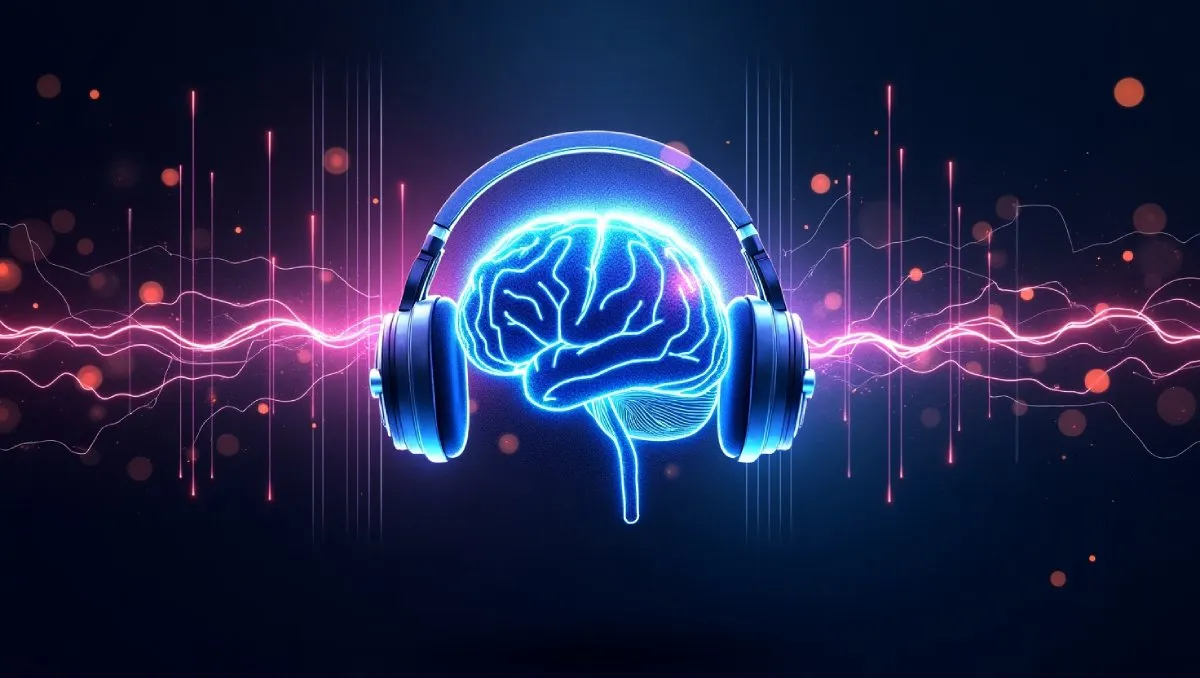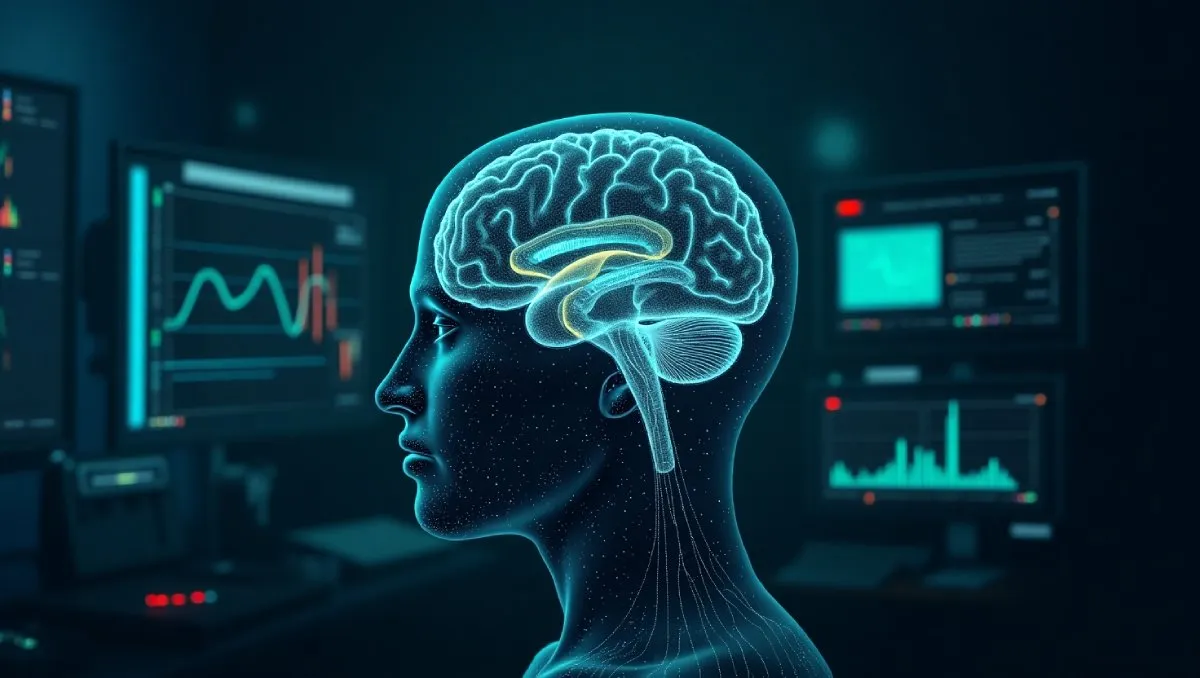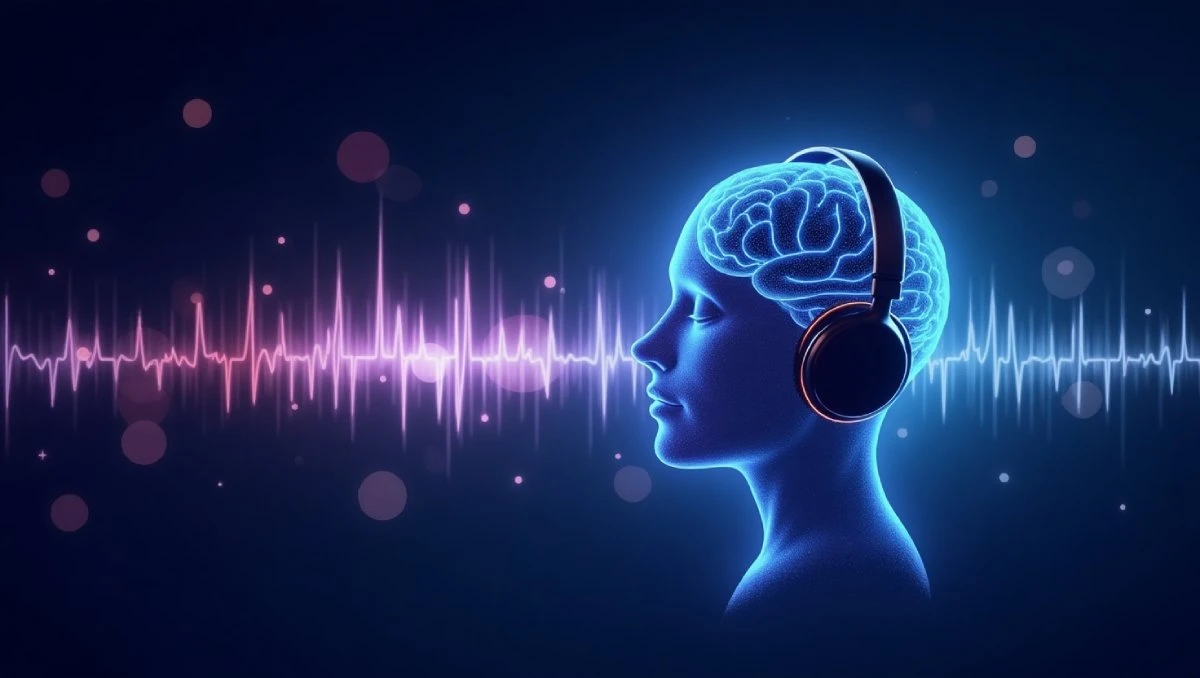Binaural beats have surged in popularity over the past decade, touted for their potential benefits in relaxation, focus, and even enhancing sleep quality. From binaural beats meditation and binaural lucid dreaming to their use in binaural music for sleep and binaural study beats, millions of users worldwide rely on these auditory phenomena. However, as the usage of binaural audio for sleep and meditation grows, an important question arises: can binaural beats damage your brain? In this article, we dive deep into the science, potential risks, and best practices surrounding binaural beats, and address the common concerns regarding their safety.
Understanding Binaural Beats
What Are Binaural Beats?
Binaural beats occur when two slightly different sound frequencies are presented separately to each ear through binaural headphones. For instance, if your left ear hears a tone of 300 Hz and your right ear hears a tone of 310 Hz, your brain interprets a third tone—a beat—of 10 Hz. This auditory illusion is the result of a process called binaural entrainment, where your brain synchronizes its electrical activity to the frequency difference between the two tones.
How Are Binaural Beats Created?
Binaural beats are created through carefully engineered audio tracks that require a pair of stereo headphones for proper effect. This is why many experts emphasize that binaural beats only work with headphones. The separate frequencies must reach each ear individually; without isolation, the effect is lost, and the sound may blend into a single tone, preventing the brain from experiencing the desired entrainment.
The Science of Binaural Entrainment
Brainwave Frequencies and Their Roles
The underlying theory behind binaural beats lies in the brain’s natural tendency to adjust its brainwave patterns in response to external stimuli. Specific frequencies correlate with various states of mind:
- Delta (0.5–4 Hz): Associated with deep sleep and relaxation.
- Theta (4–8 Hz): Linked with meditation, creativity, and light sleep.
- Alpha (8–13 Hz): Often experienced during relaxed wakefulness.
- Beta (13–30 Hz): Connected to alertness, concentration, and active thinking.
- Gamma (30–100 Hz): Associated with high-level cognitive functions and consciousness.
These binaural frequencies can be used in various applications—ranging from binaural asmr and binaural sleep sounds to advanced techniques like binaural lucid dreaming and binaural meditation. However, while many users claim these frequencies help improve focus, reduce anxiety, or promote relaxation, the scientific community has yet to reach a unanimous conclusion regarding the long-term effects on brain health.
The Mechanism of Binaural Entrainment
The process of binaural entrainment involves the brain aligning its internal electrical oscillations with the frequency of the perceived beat. Proponents argue that this alignment can enhance relaxation, concentration, and even creativity. For instance, when listening to binaural beats designed for binaural sleep, the brain is thought to shift into slower wave patterns that promote deep, restorative sleep. Similarly, some claim that binaural beats meditation can lead to enhanced mindfulness and stress relief.
Examining the Safety Concerns
Can Binaural Beats Damage Your Brain?
One of the primary concerns raised by skeptics is whether the continuous exposure to binaural beats could potentially harm the brain. Current scientific evidence indicates that when used responsibly, binaural beats are generally safe and do not cause permanent brain damage. However, it’s important to understand the nuances behind this conclusion.
Volume and Duration Considerations
Listening to any audio at an excessively high volume can potentially lead to temporary discomfort, such as ear fatigue or headaches. This applies not only to binaural beats but to all forms of audio content. Experts recommend keeping the volume at a moderate level and avoiding prolonged exposure without breaks. Using binaural headphones that offer a comfortable listening experience and excellent sound isolation can minimize the risk of auditory strain.
Individual Sensitivity and Underlying Conditions
Not everyone reacts to binaural beats in the same way. Some individuals might experience heightened anxiety or irritability when exposed to specific frequencies. If you have a neurological condition—such as epilepsy or ADHD—caution is advised. Although binaural beats ADHD studies have explored the potential benefits of using these frequencies for attention regulation, individuals with pre-existing conditions should consult a healthcare professional before incorporating them into their routine.
Anecdotal Reports vs. Scientific Evidence
There have been anecdotal reports of discomfort and adverse effects in some users, but these tend to be transient and related to factors such as improper use (e.g., excessive volume or extended listening sessions) rather than inherent damage to the brain. Most research indicates that the brain's ability to adapt to auditory stimuli, including binaural frequencies, is robust and does not result in structural damage. Nonetheless, more longitudinal research is needed to fully rule out any long-term risks.
Potential Risks Associated with Binaural Beats
Temporary Side Effects
While there is no evidence to suggest that binaural beats cause lasting brain damage, some users report temporary side effects. These can include:
- Headaches: Prolonged exposure or listening at high volumes can trigger headaches.
- Dizziness: Some listeners experience mild dizziness, particularly if they are new to the practice.
- Increased Anxiety: In a few cases, instead of reducing anxiety, certain frequencies may exacerbate anxious feelings in sensitive individuals.
Impact on Cognitive and Emotional States
Binaural beats are designed to influence brainwave patterns, but altering these patterns does not equate to brain damage. However, users should be aware that the effects of entrainment can vary widely. For instance, binaural music for sleep and binaural audio for sleep are popular because they help some people achieve a more relaxed state, yet the scientific literature remains divided on whether these benefits translate into long-term cognitive improvements.
Considerations for Special Populations
Individuals with certain conditions should approach binaural beats with extra caution:
- Epilepsy: Since binaural beats affect brainwave activity, those with epilepsy may be more susceptible to triggers. Consulting with a healthcare professional is essential.
- Neurological Disorders: People with other neurological conditions should monitor their reactions closely when trying binaural beats for the first time.
- Children: There is limited research on the effects of binaural beats on developing brains. Parents should exercise caution and perhaps seek professional guidance before exposing children to binaural audio technologies.
The Role of Binaural Technology in Modern Applications
Binaural Headphones and Amplification
The effectiveness of binaural beats hinges on the use of quality binaural headphones. These headphones are engineered to deliver distinct sound channels to each ear, ensuring that the brain receives the correct frequencies separately. Binaural amplification technologies further enhance this experience, providing clearer and more immersive audio that is crucial for both meditation and practical applications like binaural hearing aids.
Binaural Technologies and Their Impact
Advances in binaural tech have led to innovative applications beyond meditation and sleep. For example, binaural on stethoscope technology is being explored in medical settings to enhance the clarity of auscultation sounds, helping healthcare professionals better diagnose patient conditions. Similarly, binaural hearing research is improving the design of hearing aids, making them more natural and effective for users. These developments showcase the broader potential of binaural audio applications without indicating inherent risks to brain health.
Binaural Music, Study Beats, and ASMR
The popularity of binaural asmr and binaural study beats has skyrocketed on streaming platforms, with many users claiming enhanced focus and relaxation. These audio experiences often incorporate a binaural frequencies list or binaural frequencies chart to select specific frequencies for desired effects. Whether used for binaural lucid dreaming or binaural meditation, these applications rely on the brain’s natural entrainment processes. There is no substantial evidence that engaging in these practices damages the brain; rather, they provide an alternative approach to managing stress and improving concentration.
Exploring Binaural Beats Meditation and Sleep
Binaural Beats Meditation: Benefits and Considerations
Binaural beats meditation is a growing trend, with many practitioners using these frequencies to deepen their meditation practice. Proponents argue that the entrainment process can lead to a state of deep relaxation and heightened awareness. However, while many users report positive experiences, the scientific consensus remains cautious. There is no evidence that binaural meditation, when done in moderation, causes any harm to the brain. Instead, it is generally seen as a safe adjunct to traditional meditation practices.
Binaural Sleep: Enhancing Restorative Sleep
Many people use binaural sleep techniques to improve the quality of their rest. By listening to binaural sleep sounds or binaural audio for sleep, users aim to facilitate a smoother transition into deep sleep stages. This practice has become particularly popular among those with insomnia or other sleep disorders. Although the effectiveness of these techniques can vary, current research does not support the notion that they damage brain structures. Instead, they may offer a non-invasive way to promote healthier sleep patterns.
Addressing Misconceptions About Binaural Beats
Myths vs. Facts
There are several misconceptions surrounding the use of binaural beats. One common myth is that the constant exposure to these auditory stimuli could “rewire” or damage the brain. However, studies show that while binaural beats can alter brainwave patterns temporarily, these changes are reversible and do not lead to permanent brain damage. The brain is highly adaptable, and the temporary shifts in frequency that occur during entrainment do not equate to structural harm.
Comparing Binaural Beats to Other Auditory Stimuli
When compared to other forms of auditory stimulation—such as music or ambient noise—binaural beats do not stand out as uniquely hazardous. In fact, music therapy has been used safely for decades to support mental health, manage stress, and even aid in recovery from certain conditions. Binaural music for sleep and binaural study beats are merely specialized forms of this broader category, designed to leverage the brain’s natural response to sound without posing any additional risks.
Expert Opinions and Research Findings
What Do Researchers Say?
The majority of scientific studies on binaural beats focus on their potential benefits rather than their dangers. Researchers have explored whether binaural entrainment can aid in relaxation, improve concentration, or even assist with conditions like ADHD (binaural beats adhd). While some studies have observed positive outcomes, others have found no significant differences compared to control groups. Importantly, none of these studies have provided evidence that binaural beats cause lasting harm or structural damage to the brain.
The Consensus in the Scientific Community
While further research is needed to fully understand all the potential effects of binaural beats, the consensus among neuroscientists is that they are safe when used appropriately. Temporary side effects—such as headaches or mild dizziness—are generally related to listening habits (volume, duration, or individual sensitivity) rather than any intrinsic neurotoxic effect. In short, when used responsibly, there is no scientific basis to claim that binaural beats damage your brain.
Best Practices for Using Binaural Beats Safely
Choosing the Right Equipment
Using high-quality binaural headphones is crucial for achieving the intended effect without risking discomfort. Good headphones ensure that each ear receives the correct frequency without interference. Additionally, many users invest in binaural amplification devices that help enhance the clarity and precision of the audio signal.
Moderation and Mindful Listening
As with any form of audio stimulation, moderation is key. Here are some tips to ensure safe use:
- Limit Session Duration: Start with short listening sessions and gradually increase the duration as you become accustomed to the experience.
- Monitor Volume: Keep the volume at a comfortable level to avoid auditory strain.
- Take Breaks: Periodically pause your sessions to give your ears and brain a rest.
- Be Mindful of Reactions: If you notice any discomfort—such as headaches, dizziness, or increased anxiety—reduce the duration or frequency of your sessions.
Special Considerations for Sensitive Users
Individuals with specific health conditions or heightened sensitivity should exercise additional caution:
- Neurological Conditions: If you have epilepsy or another neurological disorder, consult your healthcare provider before using binaural beats.
- Children and Adolescents: Limited research exists on the effects of binaural beats on developing brains. Parents should be cautious and seek professional guidance before introducing these sounds to young listeners.
- Mental Health Considerations: For those with anxiety or mood disorders, it is important to monitor emotional responses closely. While some find that binaural meditation helps alleviate symptoms, others may experience transient increases in anxiety.
Future Directions in Binaural Research
Ongoing Studies and Innovations
The field of binaural research is evolving rapidly. Advances in binaural technologies and binaural tech are enabling more precise studies on the impact of these sounds on the brain. Researchers are now using neuroimaging and electrophysiological techniques to monitor how binaural frequencies affect brain activity in real time. This could eventually lead to more personalized applications of binaural beats for meditation, sleep enhancement, and cognitive support.
Integration With Modern Therapeutic Practices
There is growing interest in integrating binaural beats with other therapeutic modalities, such as mindfulness-based stress reduction and cognitive-behavioral therapy. The synergy between binaural beats meditation and traditional practices could pave the way for innovative treatment approaches, particularly for conditions like ADHD and anxiety. However, these integrations are still in the early stages, and further research will be essential to determine the efficacy and safety of such combined interventions.
Conclusion: So, Can Binaural Beats Damage Your Brain?
After examining the science, expert opinions, and user experiences, the evidence indicates that binaural beats, when used properly, do not damage your brain. Key points include:
- Safety of Binaural Beats: When listened to at moderate volumes and for reasonable durations, binaural beats are generally safe. There is no compelling evidence that they cause lasting brain damage.
- Temporary Side Effects: Some users may experience short-term side effects such as headaches or mild dizziness, but these are typically related to listening habits rather than intrinsic dangers of the binaural frequencies.
- Individual Sensitivity: As with many wellness tools, individual responses vary. Users with neurological or mental health conditions should exercise caution and consult professionals as needed.
- Advancements in Binaural Technologies: High-quality binaural headphones, binaural hearing aids, and other innovations in binaural amplification continue to improve the overall experience, further reducing risks.
Ultimately, the fear that binaural beats might damage your brain is largely unfounded when used responsibly. They offer a promising tool for enhancing relaxation, focus, and sleep quality without posing significant risks. However, as with any emerging technology, continued research and mindful usage are essential.
If you’re considering adding binaural beats to your wellness routine—whether for binaural sleep, binaural study beats, or binaural asmr experiences—start slowly, listen at safe volumes, and be attentive to your body’s signals. Remember that while the current consensus supports their safety, staying informed about new research and best practices is always a smart approach.




